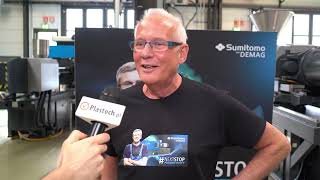Adhesive technologies – an overview
In industrial manufacturing, adhesives are playing an increasingly important role in the production of many different kinds of products. They offer a number of advantages that conventional joining techniques cannot match. Compared with traditional assembly methods, adhesive bonds are superior in the presence of dynamic stress, thanks above all to their flexible nature. Rivets or bolts can only transmit forces over a very localized area (point loads), whereas in an adhesive bond, the stress distribution or force transmission is spread over the entire area of the bond. In addition, the parts to be bonded are not weakened by the drilling of holes.

The low heat build-up is another key criterion when joining parts that already have their final surface finish, for example chrome-plated steel. As non-conducting materials, cured adhesives also have an insulating effect, thus preventing contact corrosion. The substrates involved and the demands made on the final construction are deciding factors when selecting the adhesive to be used. Depending on the field of application, various adhesive technologies with specific product properties are available for structural bonding.
Epoxies
The most widespread class of adhesives used for structural bonding are the epoxies. They are found in automotive and aircraft manufacturing as well as in the building and construction industry. Their big advantage is that they can bond both metals and plastics. Moreover, they are extremely durable, show a low tendency to creep, and only minimal shrinkage on curing. Depending on the type, they can withstand continuous exposure to temperatures ranging up to 100 – 200 degrees Celsius. A further advantage is their very good chemical resistance, although they are generally rigid.
Epoxy adhesives offer a broad potlife range of five minutes up to two hours. A long potlife can be an advantage when the parts to be joined require some time to maneuver or when they have to be repositioned after they have been assembled.
Epoxies are available as one-part or two-part systems. In one-part systems, the resin and hardener components are already mixed in the correct ratio during production and only begin to react with each other when exposed to heat. Two-part systems consist of separate resin and hardener components which are only mixed directly before application. When using two-part systems, it should be remembered that the chemical curing reaction begins immediately after mixing.
Polyurethanes
Polyurethane adhesives are also available as one-part or two-part systems. They come in a large variety of viscosities, with a broad range of cure times and different specifications regarding chemical resistance. The degree of crosslinking and hence the final bond strength is determined by the combination of raw materials contained in each of these adhesive systems.
Therefore, perhaps their most relevant feature is their capability to match virtually any mechanical requirement, ranging from very rigid grades to extremely flexible adhesives. In addition, they show good resistance to many kinds of solvents. With this performance profile, polyurethanes are therefore widely used for bonding tasks in industries with applications as diverse as bonding windshields to car bodies or assembling rotor blade shells for wind energy plants.



